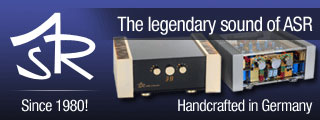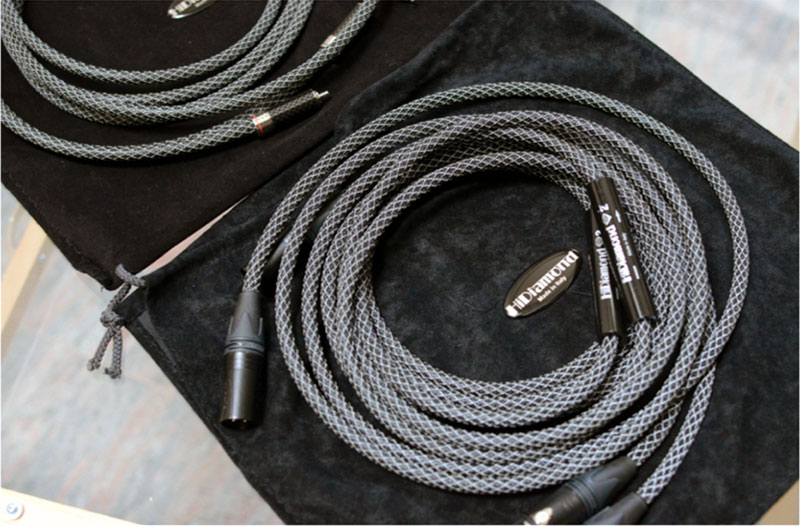Writing about cables is a risky undertaking for an audio reviewer. I am not sure if I’ll be able to explain all the reasons, but I’ll at least identify a couple of them to show my reluctance for writing cable reviews. There is a large number of individuals who will scoff at the notion of discernible audible differences between cables, so as soon as one recommend something which cost more than Home Depot wires, one runs the risk of being categorized as a member of Dr. Evil’s snake oil marketing scheme. Then there are those who will label us as victims of bias-induced placebo-effect, audible differences if any are nothing but a self- induced imaginary response to justify our lavish spending. And then there are witty comments from my non-audiophile friends which usually bring silence to the dinner table: “You mean you actually write articles telling people how you spent hours going back and forth between two wires?”
Then there is the real reason for my reluctance to do cable reviews, the fear of damages to my piggy bank. What if it does sound better than what I have now? My main system uses six pairs of interconnects, fourteen power cables and one pair of speaker cables. When I priced out a complete set of Siltech cables for my entire system, it came to just about the same price as a souped-up 911 Turbo. The suffering I endured when I had to return the Siltech cables to Edward Ku of Element-Acoustics was too painful to bear. The Siltechs sounded absolutely fantastic, but my kids do have to go to college. In the past two months, I have already succumbed to two temptations by buying two excellent sounding phono stages so my piggy bank surely is not ready for another blow.
Robert Neill of Worldwide Distributions, North American distributor of HiDiamond cables, is a very persistent, and kind, man. He kept bringing to me these beautiful-looking Hi Diamond cables from Italy, telling me they are “the best” cables he has ever heard. For a couple of weeks, I tried very hard to ignore the two cables which he had left with me, the Diamond D7 RCA interconnects, and the Diamond D2 XLR Balanced cables. They sat in my living room for weeks, and I resisted the temptations to try them out. I do not believe in the concept of “the best” of anything so I was hoping to just return them to Rob without trying them.
Leaving fancy audio components in the hands of an audiophile is like leaving drugs in the hands of an addict; just give them enough time and eventually they will yield to the temptation. Resistance is futile. Fortunately, these cables are not as expensive as the Siltechs, though they are not chump change either. The Diamond D2 XLR retails for $1,000 for a meter-pair, and the Diamond D7 RCAs for $900 for a meter-pair.
On a late Friday night in early February, I could resist the temptations no longer and the time was ripe to pamper my five senses to the fullest. Over a glass of 1988 Argiano Brunello di Montalcino, I plugged the D7 RCAs in between my phono stage and the preamp, and the D2 XLRs in between my preamp and the power amp. Fine Italian cables and fine Italian wine, what a combination! The nose of the Argiano was packed with dark fruit, cherry, and spice. Despite being twenty-four years old, the wine had body to it, yet the age has done away with all the tannins, so that it had no hard edges to speak of. The impact of the HiDiamond cables on my system was as intensive as the jolt from the first sip of the wine. It was as if someone had taken the frequency curve and lifted both ends of the spectrum. The cables added ambience and top end extension, but not at the expense of sounding analytical or edgy. Usually when the bottle is half emptied, everything will sound better so I knew better than to tell Rob that I was keeping the cables until they could be evaluated without the influence of properly aged Brunello di Montalcino.
What happened in between the time from that evening onwards, to the time of my eventual phone call to Robert Neill telling him that I was buying the review samples, is what I am going to tell you for the rest of this article. So let’s not call it a review but a snap shot of my personal encounter with the HiDiamond cables as an audiophile. It is not my intention to proclaim that I have discovered yet another “best sounding cable I have ever heard”. I just want to tell readers about the sonic characteristics of these two cables with reference to the cables I have on hand, so that it may help them to determine for themselves whether it may be suitable for their own system.
HiDiamond cables
HiDiamond is an Italian high end cable manufacturer started by Filippelli Salvatore in 2000. It is one of only a handful of cable companies which uses alloy as conductor material, rather than just copper, silver, or gold conductors, or plated combinations of such sourced from OEM manufacturers. Other manufacturers which employ alloys include Siltech, Purist and Stealth. According to Filippelli, the conductor materials employed in HiDiamond cables are custom made to their exact specification in Italy. Depending on the model, they may consist of a combination of copper, graphite, and in some models, gold and silver. Detailed technical information as well as the construction process of the cables can be found on HiDiamond’s website.
When Robert Neill contacted me about the possibility of a review, I did not have a particular model in mind so he offered me cables which sit at the upper range of the model lineup (Diamond 9 RCAs, $2,300/m). He also offered to fit my system completely with HiDiamond cables from interconnects to power cords. I had to decline both offers for several reasons. First, I did not want to review cables which I cannot afford in case I liked them. Robert probably wasn’t aware of the number of cables my system required; just for power cords alone, I would need fourteen of them. Last but not least, I am more interested in knowing about the incremental sonic changes by changing just one cable. This way I can identify the sonic characteristics of this cable relative to what I have on hand. A complete system of Hi Diamond cable would not allow me to determine where the changes, if any, were coming from. At the end, we settled on a 2.5 meter pair of HiDiamond D2 XLRs and D7 RCA interconnects.
The D7 RCA is in the middle of the HiDiamond’s RCA lineup, which ranges from the entry level Diamond 1 ($80/m) to the Diamond 9 ($2,300/m). The D2 XLR sits in the middle of three XLR cables which HiDiamond makes, the Diamond 1, 2 and 3.
It is interesting to note that the model numbers for HiDiamond’s RCA cables do not correspond to the model numbers of the XLR cable. In fact, there is no XLR version of any of the RCA cables. The D2 XLR is a different cable from the HiDiamond 2 RCA, despite having the same model number. They also differ in price substantially. Although the D7 RCA is closer in price to the Diamond D2 XLR, they are two different models as well.
HiDiamond publishes the technical information for each cable on their website. As you go up in the model line, you will see that the higher models offer lower capacitance and resistance.
The two cables looked almost exactly the same as both are housed in a reflective tech flex jacket. Both cables are 8mm in diameter, and are reasonably flexible but are incapable of flexing 90 degree turns. The Diamond D2 XLR has Neutrik silver connectors, and the Diamond D7 RCA has locking RCA connectors which look very similar to Furutech’s Carbon locking RCA connector with carbon lined housing. The solder used for the joints is 4.2% silver solder. Upon verification with Filippelli Salvatore, I was told these are not Furutech connectors, but rather custom made Rhodium plated locking RCAs housed in a carbon graphite jacket. They are exquisite to feel and touch. Each of the RCAs and the XLRs has a black colored directional indicator with the HiDiamond logo printed on them. They slide back and forth and probably serve no purpose other than aesthetics.
The first cables which went into my system were the Diamond D2 XLR interconnects. They went in between the McIntosh C1000 preamp and the MC2KW power amplifier. This exercise was repeated for the Diamond D7 RCA cable in the exact same location, followed by using both cables together from the phono stage to the preamp, and from the preamp to the power amp.
The cables which the HiDiamond cables replaced are all Purist Aqueous Aureus XLR interconnect of the same length, which by the way have been the cable of choice for my system in the past few years. Amongst the 25+ pair of interconnects I have tried, I will not go so far as to say that they are “the best” cable for the money, because I do not believe in such a concept. The Aqueous Aureus delivers a tonality and sonic characteristics which achieve a high level of synergy with my system at a price point which I can afford. They are my favourite cables for the money because they suit my personal preference. Therefore, the Purist Aqueous Aureus is my point of reference for this exercise.
- (Page 1 of 2)
- Next page →





Zanima me cijena za diamond (imam diamond1)
Does anyone know what language this is? It’ll help me find the proper translation. Thanks!